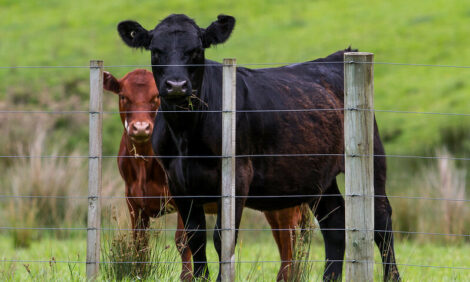



Aussies Fork Out Double for Beef
AUSTRALIA - Australians are paying A$3-4 billion every year for their beef. The Australian Beef Association (ABA) has told the Australian Competition and Consumer Commission (ACCC) that that figure is too high, explaining that they pay almost double the amount that American consumers do.| Serving up an expensive meat cut. Photo: Eblex |
Australian consumers pay more than twice as much as Americans for steak and mince. And while Australian consumers pay more, Australian beef producers receive 20% to 30% less for their cattle, ABA Director John Carter, explained to the Commission.
The price data compared retail and farm gate prices in the USA, UK and Australia. United States Department of Agriculture retail price data shows Choice Grade steaks retail for A$13.82/kg, while in Australia an equivalent steak costs A$28.00. In the US, lean mince costs A$7.40 compared to $14.00 in Australia.
The extraordinary mark-up between farm gate and retail in Australia is supported by data from the UK and Ireland. UK cattle prices are 77% higher than in Australia. In the UK, steak is only 21% dearer but mince is 21% cheaper, than in Australia. The mark-up between the farm gate and retail highlights technical inefficiency and the market power of the supermarkets to dictate prices to their suppliers.
Between them, Coles and Woolworths account for 50% of retail beef sales and purchase half of all cattle suitable for the domestic market. From this dominant trading position, supermarkets have found it easier to screw their suppliers than to encourage investment in more efficient processing and logistics. The supermarkets have crushed competition that has led to gross inefficiencies, questionable trading practices and inflated costs and margins.
We need a Royal Commission. A truly competitive meat chain will deliver a win/win outcome with lower retail prices and higher livestock prices. Australian beef producers are desperate, Mr Carter said.
ABA also took the opportunity to correct some errors in the ACCC report on livestock prices, tabled in February 2007.
In that report, the ACCC based its key finding - that the supermarkets were minor players in the purchase of beef and did not exercise significant buying power - on a misinterpretation of data supplied by Meat and Livestock Australia. ACCC claimed the data showed Coles and Woolworths together, only purchased 12% of Australia's total beef production. In fact, the supermarkets purchase about 50% of the cattle and carcasses suitable for the domestic market and are a major influence on prices and terms of trade in that segment.
The production data used by ACCC included cull cows and bulls (beef and dairy), aged bullocks and animals slaughtered for performance, genetic or health reasons. These animals are not suitable for the domestic trade. It also included animals specifically bred, fed and processed for export to Japan. These categories account for three-quarters of Australia's production and contribute little product to the domestic retail market.
'Another error in the ACCC report was the statement that: '(consumers eat) an average of 35.6 kg per person (per year).' This statement is based on the published ABARE/ABS statistic of per capita consumption. This statistic has a unit of 'kg per capita carcase weight'. It is not a measure of retail beef purchased or consumed. The statistic suggests consumers eat about two thirds of this amount per year,' John Carter concluded.
TheCattleSite News Desk


